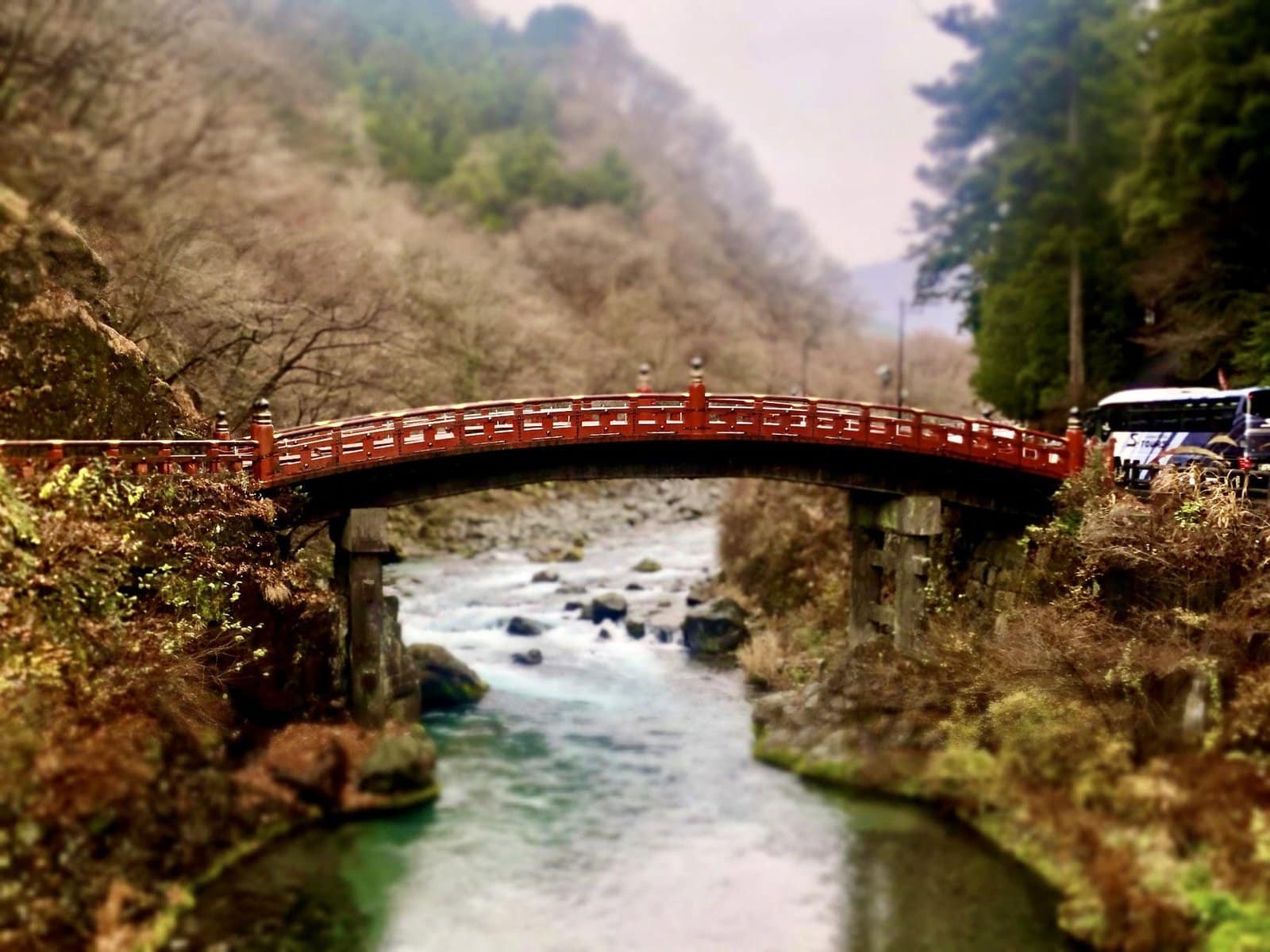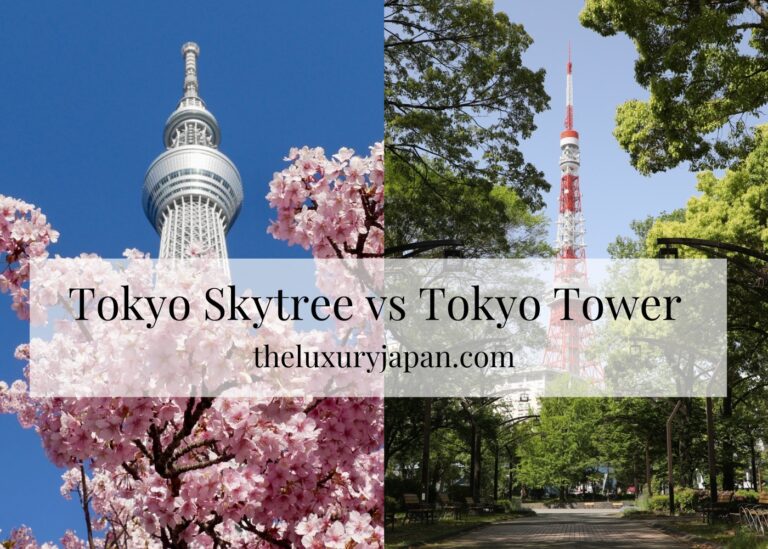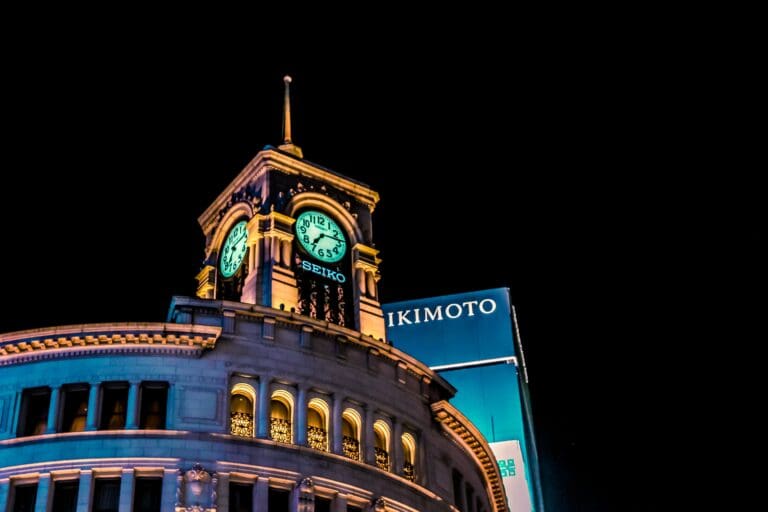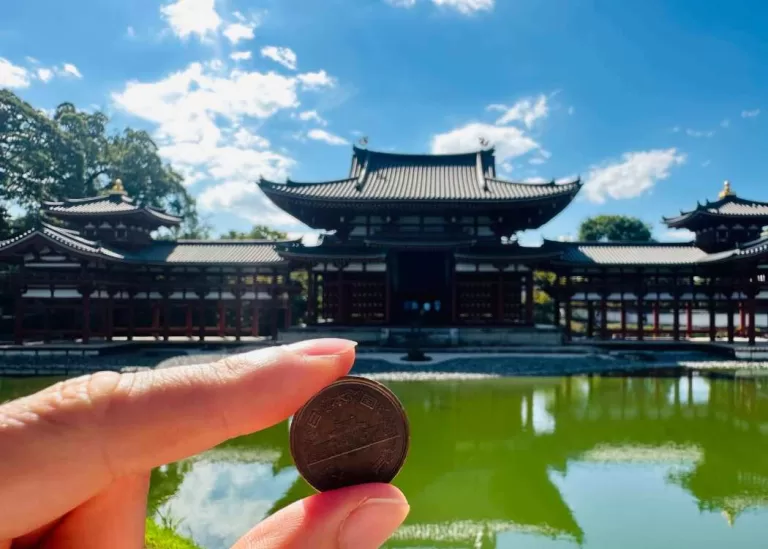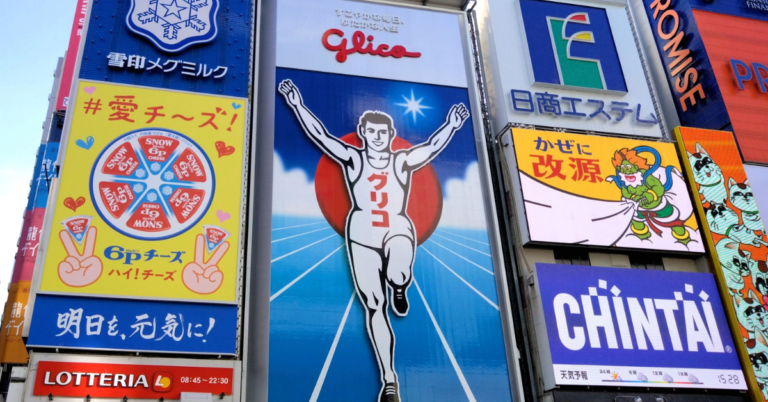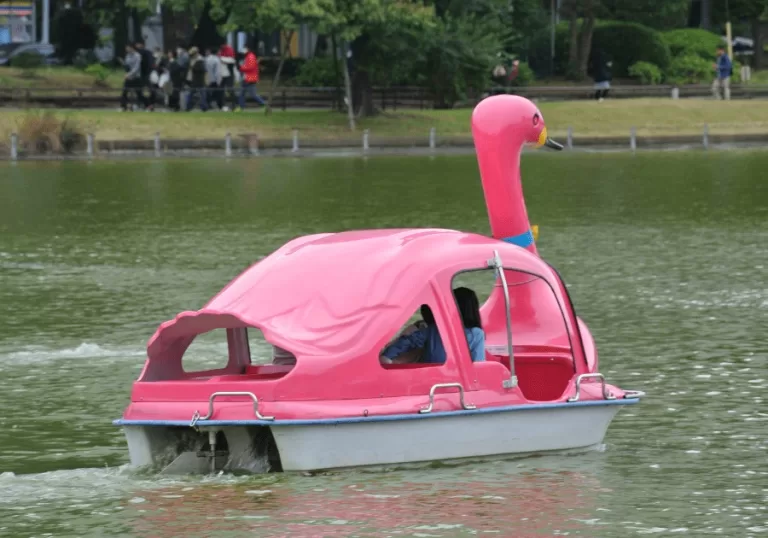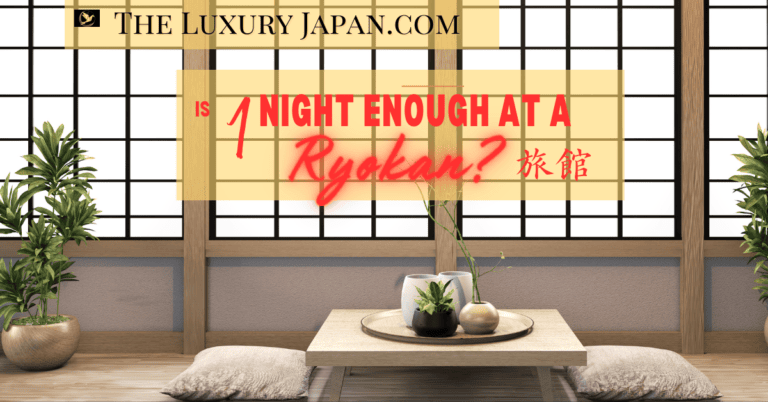Nikko Day Trip from Tokyo: A Complete Local’s Guide 2025
Planning to see a different side of Japan outside of Tokyo and Kyoto but also seeks genuine Japanese cultural experiences? Then a Nikko day trip from Tokyo is a must for your Japan itinerary.
Nikko, a UNESCO World Heritage site, is a gem just a short journey away from the bustling streets of Tokyo. Known for its rich history, stunning shrines, and breathtaking natural beauty, it offers a luxurious yet authentic Japanese experience.
In this guide, we will have a sample itinerary for a day trip from Tokyo to Nikko, together with our tips and recommendations as local Japanese.
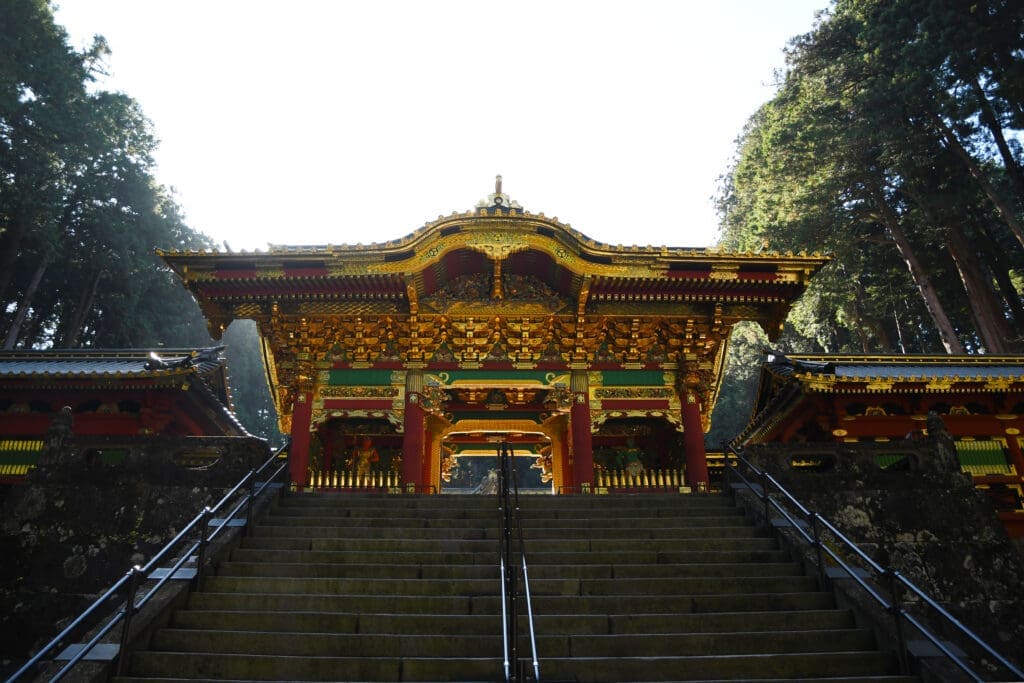
If you don’t have time to read, here is our comprehensive guide for exploring Nikko from Tokyo itinerary sample – plus, if you are coming to Japan you can also refer to our other itineraries for 1-week in Japan, as well as 2 weeks in Japan.
Some of the links on this site are affiliate links, which means a commission may be earned if a purchase is made through them. This comes at no additional cost to you. These links are provided to enhance the travel experiences shared on this site. The support provided through these links helps to maintain the site.
Morning: World Heritage Sites
8:00 AM: Tokyo to Nikko: 2 hours by train
Depart from Tokyo either by train (from Tokyo Station to Utsunomiya Station via Tohoku Line, then transfer from Utsunomiya Station to Nikko Station).
10:00 AM: Arrive in Nikko and head to Shinkyo Bridge (8 mins by bus, 25 mins by walk)
Begin with a visit to the Shinkyo Bridge then head to Toshogu Shrine, a UNESCO World Heritage site. Do not miss Nikko Futarasan Shrine where local Japanese pray for success and love.
1PM : Lunch at Meiji no Yakata, a restaurant famous for omelette rice, whose building was built during the Meiji Period.
From Meiji no Yakata, take a bus to Kegon Falls for around 50 minutes.
Tip: If you enjoy Japan’s cultural history, you can still isit the Tamozawa Imperial Villa before heading to Kegon Falls. Tamozawa Imperial Villa is a blend of traditional Japanese and Western architecture, offering a glimpse into the luxurious lifestyles of the past.
Afternoon: Nature Sightseeing
3:00 PM: Explore Kegon Falls, one of Japan’s most beautiful waterfalls and stroll around Lake Chuzenji to enjoy the serene ambiance.
5:00 PM: Relax at Nikkowanoshiro Onsen Yashio Hot Spring before heading back to Tokyo
7:00PM: Go back to Tokyo
Nikko Day Trip from Tokyo: Your Comprehensive Guide to Getting There
- By Train: The Most Popular Choice
- Route: From Tokyo Station, take the Tohoku Shinkansen to Utsunomiya Station. From there, transfer to the JR Nikko Line which will take you directly to Nikko.
- Duration: Approximately 2 hours.
- Cost: Around 5,000 yen (one way).
- Tip: The Japan Rail Pass covers this route, making it a cost-effective option for tourists.
- By Direct Express Train:
- Route: Tobu Skytree Line Limited Express from Asakusa Station in Tokyo directly to Tobu-Nikko Station.
- Duration: About 2 hours.
- Cost: 2,800 yen (one way).
- Tip: Consider the Tobu Nikko Free Pass if you plan on using Tobu trains and buses around the Nikko area.
- By Car
- Route: Take the Tohoku Expressway to Utsunomiya, followed by the Nikko-Utsunomiya Road directly to Nikko.
- Duration: Approximately 2 to 2.5 hours.
- Cost: Toll fees vary, but expect around 3,000 yen one way.
- Tip: This option offers flexibility, especially if you plan to explore off-the-beaten-path spots.
Complete Itinerary: Nikko Day Trip from Tokyo
MORNING
8:00 AM: Start your Nikko day trip from Tokyo by taking a train at Tokyo Station.
10:00 AM: Arrive in Nikko. Begin with a visit to the Shinkyo Bridge and Toshogu Shrine, a UNESCO World Heritage site. Marvel at the intricate carvings and the famous “See No Evil, Hear No Evil, Speak No Evil” monkeys.
Shinkyo Bridge
Distance from Nikko Station: Approximately 10 minutes by walk.
What to Expect: A striking vermilion lacquered bridge that stands as the gateway to Nikko’s sacred sites.
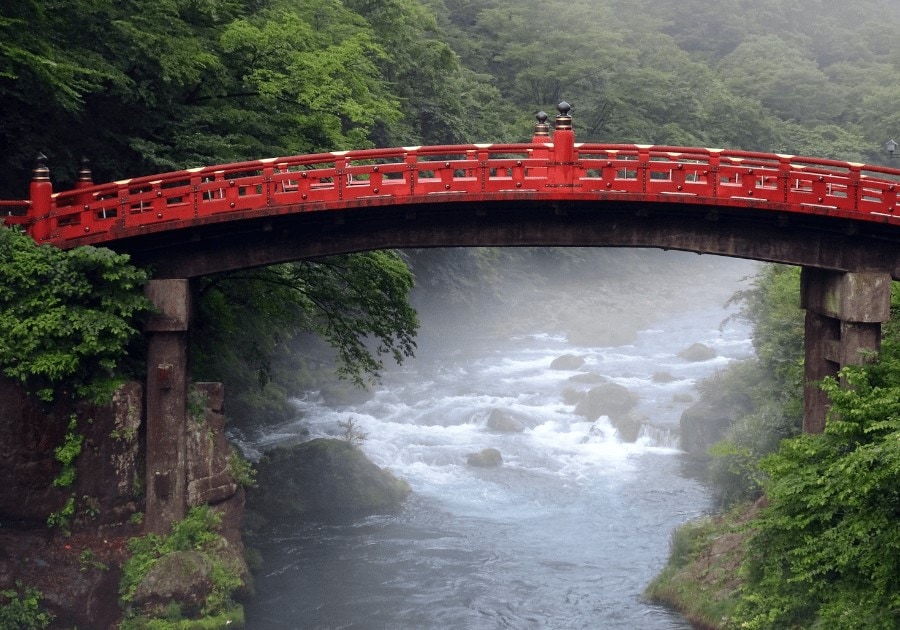
Why It’s Famous
The Shinkyo Bridge is not just a beautiful structure; it’s a symbol of Nikko’s spiritual significance. Historically, it was considered so sacred that only the Shogun and imperial messengers were allowed to cross it.
Its serene setting over the Daiya River and its vibrant vermilion color contrasting with the lush surroundings make it a picturesque spot.
Did You Know?: The current bridge, built in 1636, is actually the latest in a series of bridges that have been constructed at this site. The original was supposedly formed by two serpents turned into a bridge for a priest in the 8th century.
Shinkyo bridge is a very famous bridge which you should not miss when having a Nikko day trip from Tokyo.
- Tips: Early morning visits offer a serene experience with fewer crowds.
- Time Spent: 15-30 minutes.
- Entrance Fee: Around 300 yen.
Toshogu Shrine
- Distance from Shinkyo Bridge: About 20 minutes by walk.
- What to Expect: A sprawling shrine complex with intricate carvings and lavish decorations set amidst a beautiful forest.
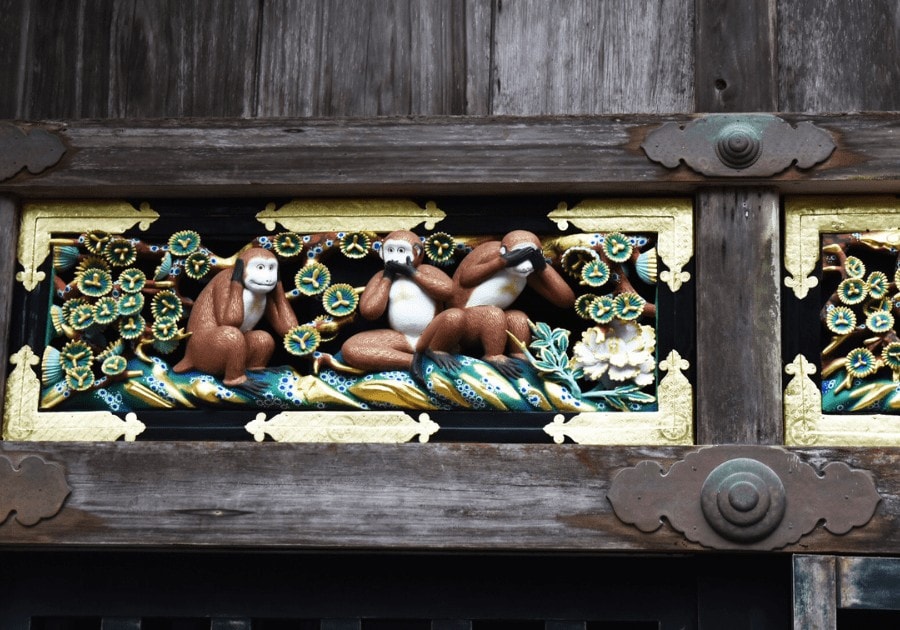
- Why Visit: Toshogu Shrine is not just a UNESCO World Heritage site; it’s the final resting place of Tokugawa Ieyasu, the founder of the Tokugawa Shogunate that ruled Japan for over 250 years. The shrine is a masterpiece of Japanese architecture, adorned with intricate carvings, gold leaf, and vibrant colors.
- Must-Sees:
- Yomeimon Gate: Often referred to as the “Gate of the Sun,” this ornate gate is a testament to the craftsmanship of the Edo period.
- Five-Story Pagoda: Standing tall beside the main hall, this pagoda is both a structural and aesthetic marvel.
- Sleeping Cat (Nemuri-neko): A small but famous carving that symbolizes peace.
- Unique Feature: The “See no evil, speak no evil, hear no evil” monkey carvings, which have become symbols of worldly wisdom.
- Time Spent: Allocate 2-3 hours to fully appreciate the shrine’s beauty and significance.
Nikko Futarasan Jinja
- Distance from Toshogu Shrine: Just adjacent, a 5-minute walk.
- What to Expect: A serene shrine surrounded by ancient trees.
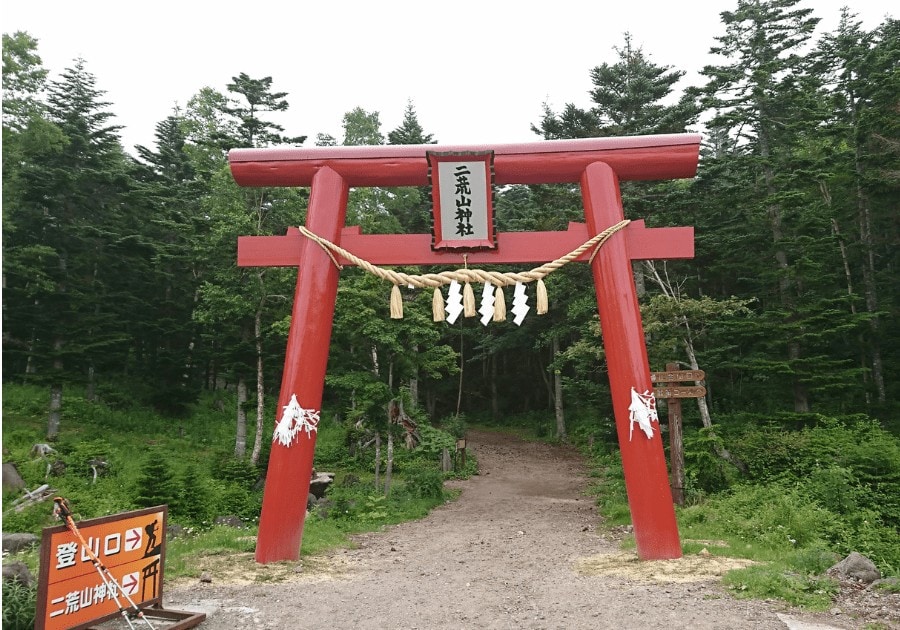
- Why It’s Famous: It’s dedicated to the deities of Nikko’s three most sacred mountains.
- Did You Know?: The shrine houses the sacred “Sword of Futsunushi,” a National Treasure of Japan.
- Time Spent: 45 minutes to 1 hour.
- Entrance Fee: Around 200 yen.
- Tips: The sacred fountain is a must-visit for purification rituals.
Lunch Options near Toshogu Shrine
- Meiji no Yakata
Why Visit: Meiji no Yakata is not just a restaurant; it’s a journey back in time. Housed in a building from the Meiji Period, it offers a unique blend of history and culinary delights.
Must-Try Dishes:
Omelette Rice: Their signature dish, this fluffy omelette paired with savory rice is a testament to Japan’s love for fusion cuisine.
Meiji Era Specialties: The restaurant often features dishes inspired by the Meiji era, offering diners a taste of history.
Unique Feature: The architecture of Meiji no Yakata is a standout. With its wooden structure and traditional design, it transports diners to the Meiji era, making the dining experience truly immersive
Budget: Mid-range, with dishes ranging from 1,000 to 3,500 yen
Time Spent: Approximately 1.5 hours, allowing diners to savor their meal and soak in the ambiance. - Hippori Dako
This cozy eatery is renowned for its authentic Japanese flavors. It’s a favorite among locals and tourists alike.
Must-Try Dishes:- Yakitori: Grilled skewered chicken that’s both juicy and flavorful.
- Tempura: Lightly battered and fried vegetables or seafood.
Budget: Mid-range, with dishes ranging from 800 to 2,500 yen.
Unique Feature: The restaurant offers a variety of locally brewed sake, which pairs perfectly with their dishes.
Budget: Mid-range, with dishes ranging from 800 to 2,500 yen.
Unique Feature: The restaurant offers a variety of locally brewed sake, which pairs perfectly with their dishes.
- Kanaya Hotel Bakery
- Why Visit: Located in the historic Kanaya Hotel, this bakery offers a fusion of Japanese and Western flavors.
- Must-Try Dishes:
- Matcha Croissant: A perfect blend of buttery pastry and rich green tea flavor.
- Nikko Cheese Tart: A local specialty that’s a must-try.
- Unique Feature: The bakery overlooks the scenic Daiya River, offering diners a picturesque view.
- Budget: Affordable, with pastries ranging from 300 to 1,200 yen.
- Time Spent: Around 1 hour for a light meal and relaxation.
Afternoon
Kanmangafuchi Abyss
- Distance from Nikko Futarasan Jinja: Approximately 15 minutes by walk.
- What to Expect: A scenic walking trail alongside the Daiya River with stone Jizo statues.
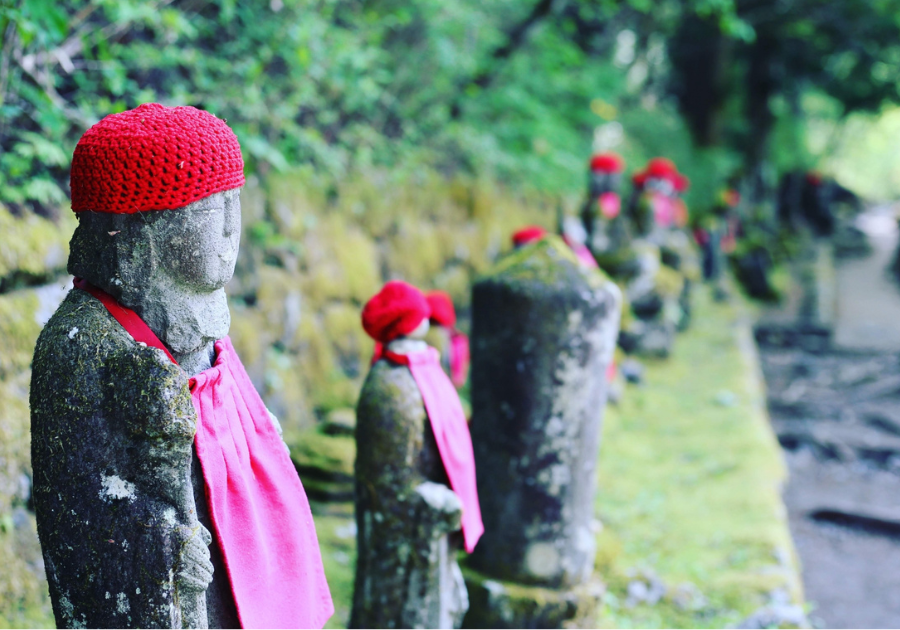
- Why It’s Famous: The abyss is known for its row of Jizo statues, protectors of travelers and children.
- Did You Know?: Legend has it that no one can count the exact number of Jizo statues. Every time you try, you’ll end up with a different number!
- Time Spent: 1-1.5 hours.
- Entrance Fee: Free.
- Tips: The abyss is especially beautiful during autumn when leaves change colors.
Street Food Recommendations: As you explore, look out for local delicacies like yuba (tofu skin) dishes, manju (sweet buns), and soba noodles. These treats are not only delicious but also offer a taste of Nikko’s rich culinary heritage.
Transportation Tips: Most attractions in Nikko are within walking distance of each other. However, if you prefer, there are local buses available that connect major attractions. The bus ride between attractions is typically short, ranging from 5 to 15 minutes.
Kegon Falls
- Why Visit: Standing at 97 meters, Kegon Falls is one of Japan’s three most beautiful waterfalls. It’s especially stunning in autumn when the surrounding foliage bursts into vibrant colors.
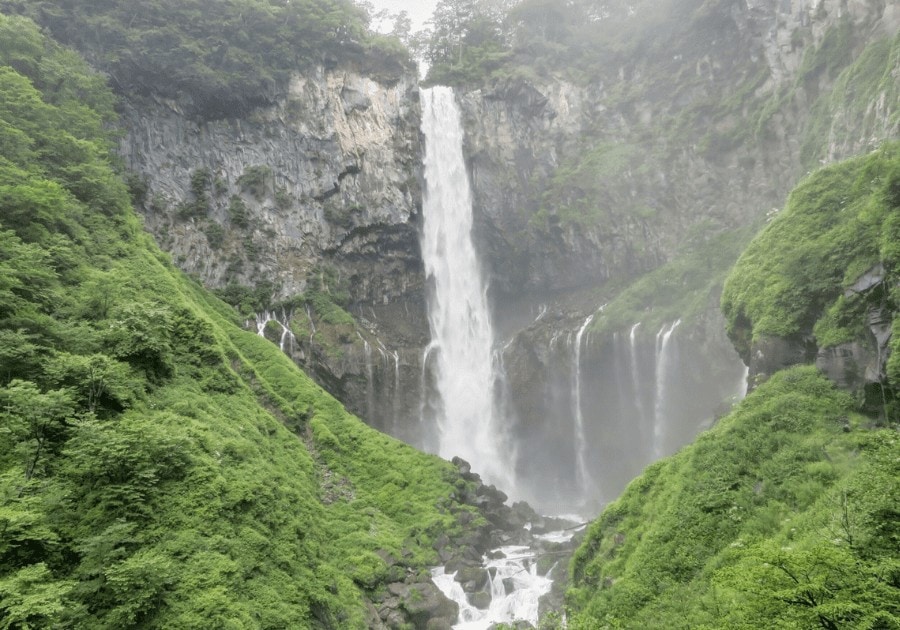
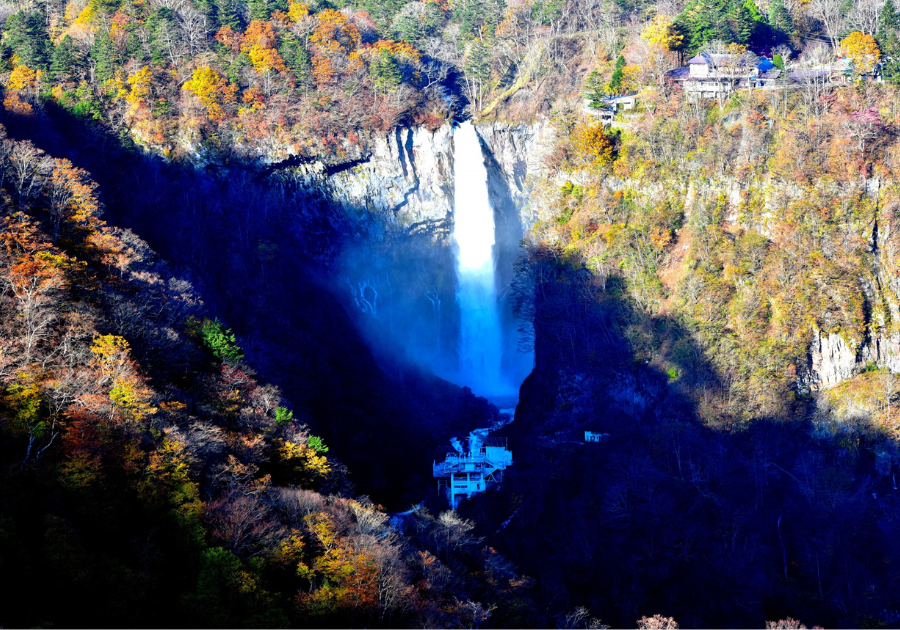
- Getting There: From Toshogu Shrine, take a bus from the nearby bus terminal towards Chuzenji Onsen and alight at the Kegon Falls bus stop (about 50 minutes).
- Must-Sees: The observation platform at the base of the falls offers a breathtaking view of the cascading waters.
- Unique Feature: The dozen smaller waterfalls flanking the main cascade, formed by the eruption of nearby Mount Nantai.
- Time Spent: Spend about 1-1.5 hours, including the time to descend to the observation platform.
Lake Chuzenji
- Why Visit: Formed by the eruption of Mount Nantai, this scenic lake offers a serene escape and panoramic views of the surrounding mountains.
- Getting There: A short 10-minute walk from Kegon Falls or a bus ride from Kegon Falls to Chuzenji Onsen.
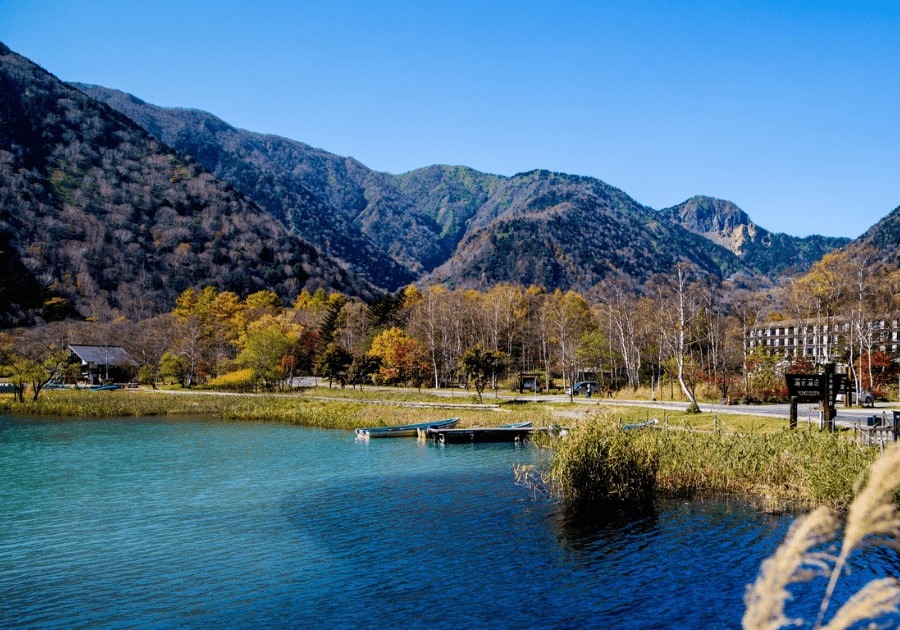
- Must-Sees: The lakeside promenade, perfect for a leisurely stroll. If visiting in October, the autumn leaves are a visual treat.
- Unique Feature: The lake’s elevation at 1,269 meters, making it the highest lake in Japan in terms of altitude.
- Time Spent: Allocate 1-2 hours for relaxation and exploration.
Tamozawa Imperial Villa
- Why Visit: This villa offers a glimpse into the lives of Japanese royals. It’s a blend of traditional Japanese and Western architecture, making it a unique architectural marvel.
- Getting There: From Lake Chuzenji, take a bus back to the main Nikko town and alight at the Tamozawa bus stop. The villa is a short walk away.
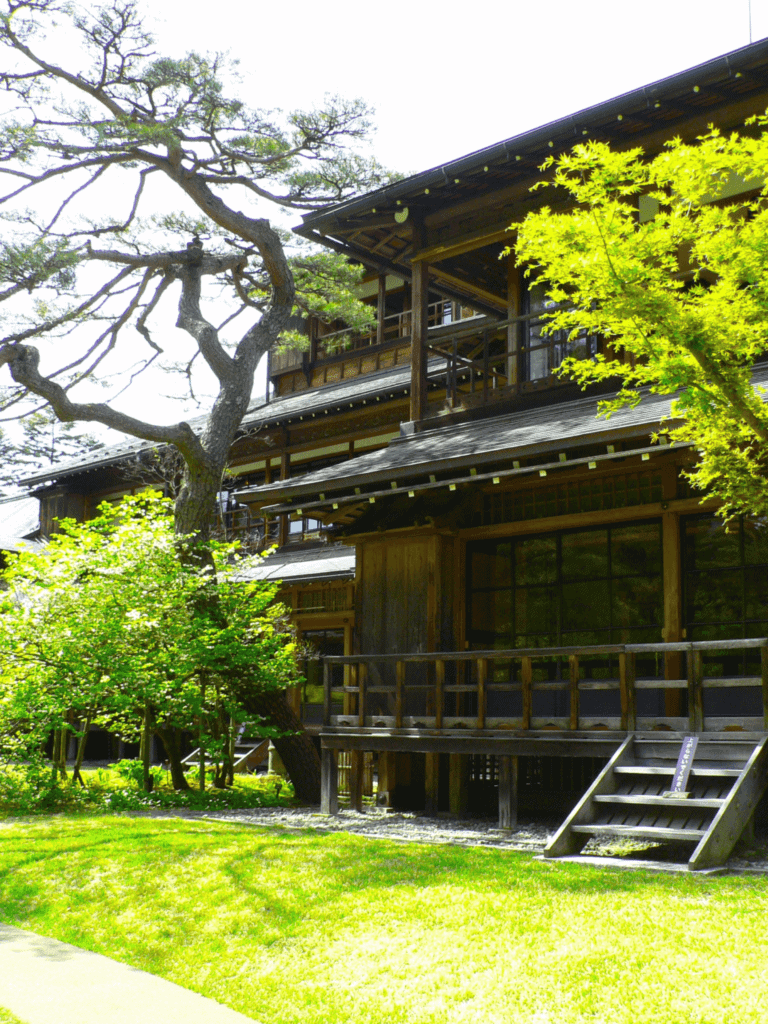
- Must-Sees: The villa’s main hall, which retains its original grandeur, and the beautifully manicured gardens.
- Unique Feature: The villa’s 106 rooms, each showcasing a different architectural style and era.
- Time Spent: Spend 1.5-2 hours exploring the villa and its gardens.
Evening:
- Local Onsen: Conclude your day with relaxation.
- Getting There: Many onsens are located near the main Nikko town. Depending on your choice, it’s either a walk or a short bus ride away.
WRAP UP
Personally, Nikko is my go-to place when I feel bored in Tokyo since it is an accessible area for day trip. It has a good balance of culture, nature, and fun things to do.
Also, the transportation options are comprehensive, and I hope that itinerary ensures you can move between attractions without any hassle for your Nikko day trip from Tokyo adventure.
